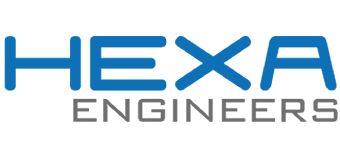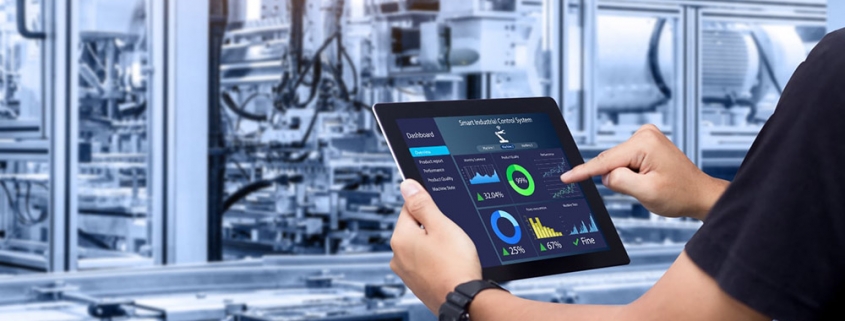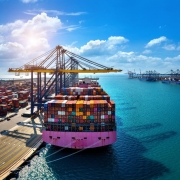Where do I start to digitize my factory from
To affirm that the productive industry has to rely on a progressive digitization to survive and grow in these times of enormous competitiveness is not to discover anything new. However, the reality of the state of industrial digitization in Spain is not as robust as one might think. This fact, which on the one hand represents a problem for the economy as a whole, is still an opportunity for those companies that have either begun to take steps in that direction, or are already aware that they have to catch a train that they can’t let go.
When referring to the productive industry, one speaks of a sector that is immersed in an unprecedented technological change. A sector that has no other option but to adjust to new production models that require increasing flexibility, profitability and competitiveness. Not in vain, investments in software programs and machinery that interact with each other to increase the efficiency of the production chain is, to a greater or lesser extent, a reality that cannot be turned away.
Much of the tasks that until not so long ago were the responsibility of the workers, have been assumed by technology prepared to optimize the manufacturing process and the design of new products. The machines are related to each other in real time and with a great capacity to collect data, analyze it and make the most adjusted decisions to the different needs of the production chain.
Therefore, delaying the digitization of the factory is no longer an option. And although there are several options – for all budgets and specific needs – a fairly common path can be drawn when facing the decision to digitize a productive industry.
Automate
Industrial automation has to do with the use of different technologies for the control and monitoring of industrial processes, machines and devices. These are repetitive functions that take place automatically and that reduce the intervention of workers as much as possible. But far from being a problem for employment in industry, it allows more tiring, repetitive or polluting jobs to be done by machines, allocating human capital to higher-skilled tasks.
Thanks to automation, production times are optimized, errors are minimized and the quality of the product and the batches that include them can be better standardized. While the production quality is increased and the risks for the worker are reduced, this one takes care of other tasks such as the design, the start-up and the control of the automated processes.
For automation to be a reality in today’s industry, elements such as PLCs, industrial robotics and advances in communications have been key. The examples to illustrate the automation of the industry are multiple, but we are going to see two that can help to get a very clear picture of what it is.
In the pharmaceutical industry, autonomous robotic work cells are those that make up the blisters with medicine pills, those that introduce them into the boxes and those that are in charge of packaging. On the other hand, if we refer to the plastics industry, the injection of the liquid material into the molds and its subsequent extraction from the part are two different and consecutive processes carried out by automated robots.
Sensorize
It is a fundamental step in the industry for the interconnectivity of the machines. To carry it out in Industry 4.0, we have the support of the IIoT (Industrial Internet of Things), which allows freeing the intervention of the human being in the monitoring process, taking advantage of the capacities of the workers for tasks with greater added value.
The sensors allow measuring variables such as movement, vibration, humidity, air quality, temperature, losses, among others. Through your constant intervention, problems are automatically detected. For example, vibration sensors allow material mixers to progressively adjust based on the quality resulting from mixing various raw materials. An essential consequence so that lots are not produced that the market could later reject.
Collect the data
In Industry 4.0, data is the most abundant element and in turn critical for the better functioning of the production process. The physical elements of digitization carry the ability to output the data that is produced, making it possible to collect it and thus benefiting production costs. They are fast, reliable tools and provide solutions to production processes and quality control systems.
Data collection entails the possibility of monitoring everything that happens throughout the manufacturing process, collecting and storing information from individual measurements through the different machines present in the process and up to the production results. The collection process must be simple and transparent, so as not to have to assume additional tasks that delay the production process.
Data transmitters are part of tools such as digital calipers or digital indicators, making it possible for data to be sent wirelessly to the measurement software. Each transmitter built into the measurement tool uses different signal codes that allow multiple measurement stations to communicate at the same time to a single receive and analysis program. Fortunately, the investment in this data collection and transmission technology is affordable enough that it can pay for itself in a reasonable period of time.
Study the data
The capture and adequate transmission of data in production processes is today a necessary condition for creating value in Industry 4.0, but it is not enough. The meaning of data is not only to serve to create autonomous decision processes in the production chain, but it also has to help other tasks to be carried out a posteriori. All the information in the form of data that constantly arrives must serve so that in addition to the analyzes and decisions made about current production, it is the basis for making forecasts and making the most appropriate decisions for the short and long term. In this way, the quality of processes and products can be optimized, as well as generating savings in terms of the resources involved in production.
Take advantage of the data
Within the global approach of Industry 4.0, the need to take advantage of all the parts that make up the production process emerges more than ever. That is why the term optimization is more relevant than ever. And not only because it is the responsibility of each company to bet on it, but because the competition has it in their roadmap and it can end up being a differential factor that can even get out of the market to those who do not consider getting the most out of it. every part of the company.
In this sense, data reappears as an essential matter in the industry. But not only during the production process as seen above, but also in their subsequent exploitation. Seeking the best performance of the data means being able to obtain tangible returns such as knowing the accident rate that is taking place, fraud, trends in sales, unproductive routes in transport and deliveries, the development of geomarketing, the best schedules … There is a lot of data that will not only strictly influence what happens within the production plant, but can save a business in difficult times or gain a considerable advantage over the competition due to its importance in areas such as marketing, transportation or customer knowledge.










